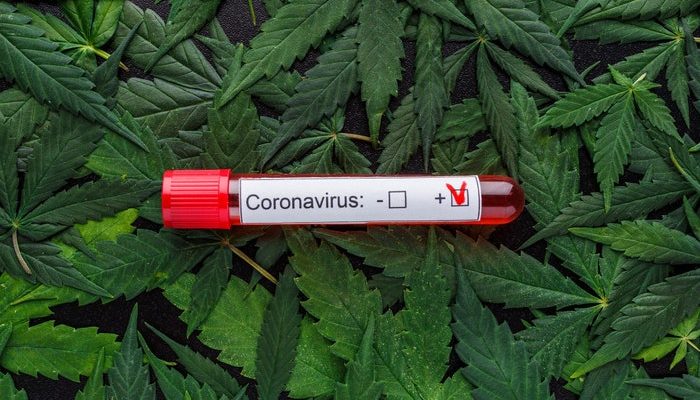Cannabis compounds discovered by Oregon State University research using a chemical screening technique invented at OSU show the ability to prevent the virus that causes COVID-19 from entering human cells.
The results of the study, led by Richard van Breemen, a researcher at the Oregon Global Cannabis Innovation Center, the College of Pharmacy, and the Linus Pauling Institute, have been published in the Journal of Natural Products.
Hemp, scientifically known as Cannabis sativa, is a source of fiber, food and animal feed, and many hemp extracts and compounds are added to cosmetics, body lotions, dietary supplements and food, van Breemen said.
Van Breemen and his collaborators, including scientists at the Oregon Health and Science University, found that a pair of cannabinoid acids bind to the SARS-CoV-2 protein, blocking a critical step in the process the virus uses to infect humans.
The compounds are cannabigorolic acid, or CBGA, and cannabidiolic acid, CBDA, and the spike protein are the same drug target used in COVID-19 vaccines and antibody therapies. A drug target is any molecule that is critical to the process followed by the disease, i.e. its disruption can prevent infection or disease progression.
“This cannabinoid acid is found in high amounts in hemp and in many hemp extracts,” van Breemen said. “They are not controlled substances like THC, the psychoactive ingredient in marijuana, and have a good safety profile in humans. And our study showed that cannabis compounds were equally effective against SARS-CoV-2 variants, including variant B.1.1.7, which was first discovered in the United Kingdom, and variant B.1.351, first discovered in South Africa.”
These two variants are also known as the alpha and beta variants, respectively.
Distinguished by crown-like protrusions on its outer surface, SARS-CoV-2 has RNA strands that code for four major structural proteins — the spike, envelope, membrane, and nucleocapsid — as well as 16 non-structural proteins and several “helper” proteins, Van Breemen said.
“Any part of the infection and replication cycle is a potential target for antiviral intervention, and the coupling of the spike protein receptor binding domain to the ACE2 receptor on the human cell surface is a critical step in this cycle,” he said. “This means that cell entry inhibitors, such as cannabis acids, can be used to prevent SARS-CoV-2 infection, as well as reduce infections by preventing virus particles from infecting human cells. They bind to spike proteins, so these proteins cannot bind to the ACE2 enzyme, which is abundant on the outer membrane of endothelial cells in the lungs and other organs.”
He notes that the use of compounds that block virus-receptor interaction has been beneficial in patients with other viral infections, in particular HIV-1 and hepatitis.





